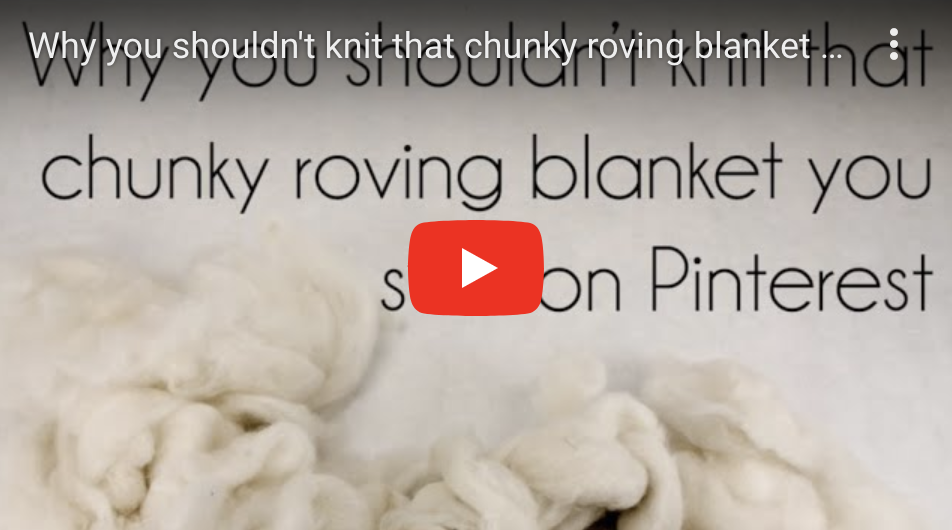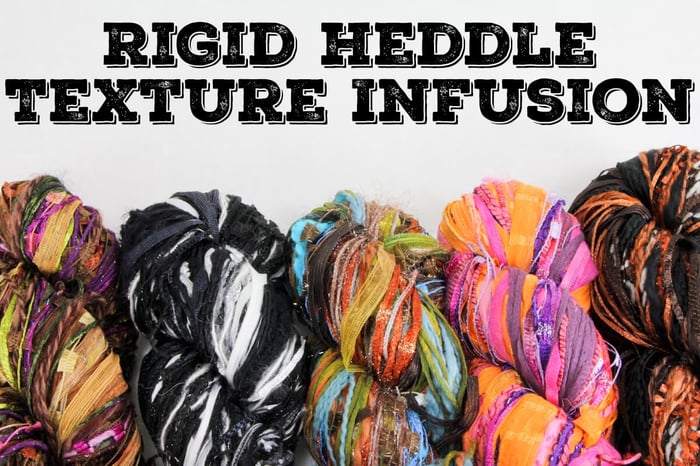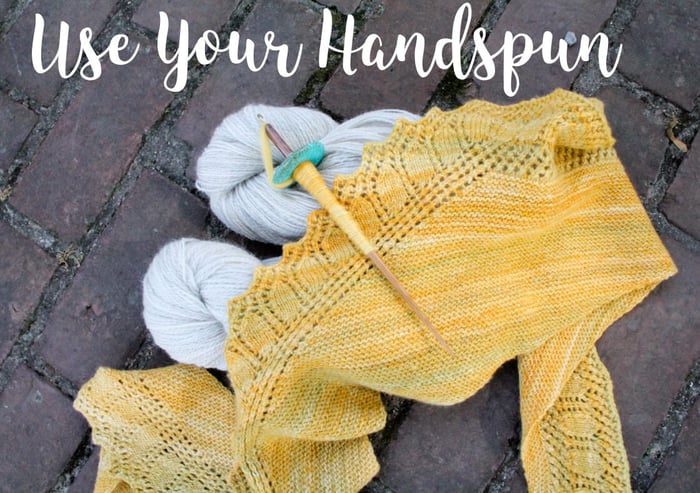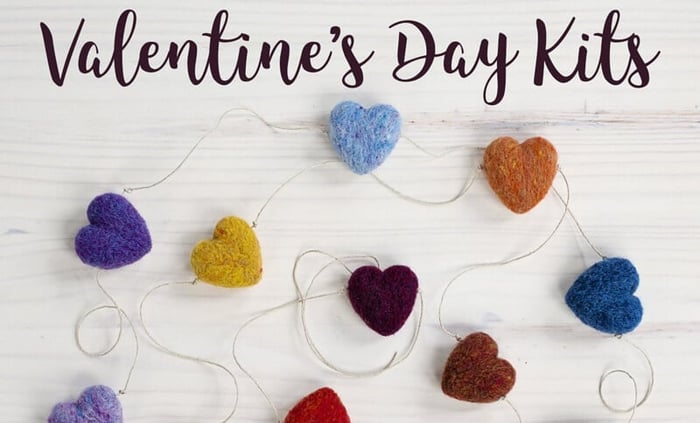Our Blog

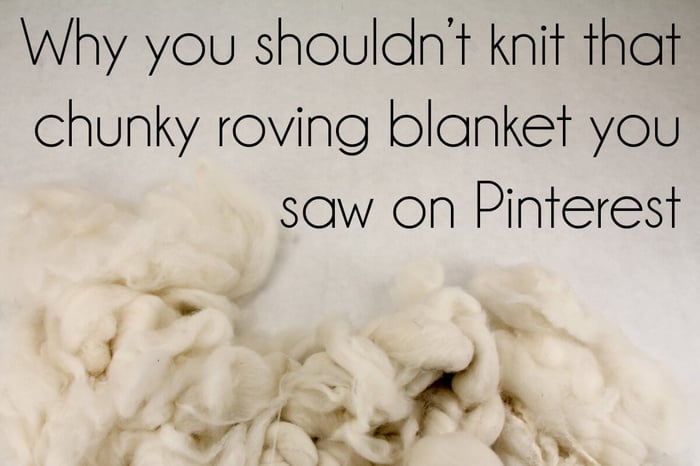
Don't Knit That Chunky Roving Blanket on Pinterest

It's been making the rounds again on Pinterest, the arm knitting/extreme knitting merino roving blanket. If you're a knitter you've probably seen them. Friends and family will send you links saying, "This is so cool, you should make one!" You have possibly even thought, "Wow a super chunky wool blanket sounds cozy, maybe I should make one?" We're here to tell you why knitting that chunky roving blanket isn't the best idea.
We here at The Woolery love wool. It's in our name, it's in our blood. We don't want innocent wool to die the sad death of these roving blankets. We did some science to show exactly why we don't recommend making these, but before we get to that we need to talk about structure. Twist gives yarn structure. Structure gives yarn resistance to abrasion. Roving has no twist by nature (it's meant to be spun into yarn!) so it therefore has no structure. This means it has very poor resistance to abrasion. What all this adds up to is that your merino roving blanket will look very nice when you first finish it... and that's about it.
To help illustrate our point, we made up some swatches to simulate what actual wear will look like on these roving blankets.
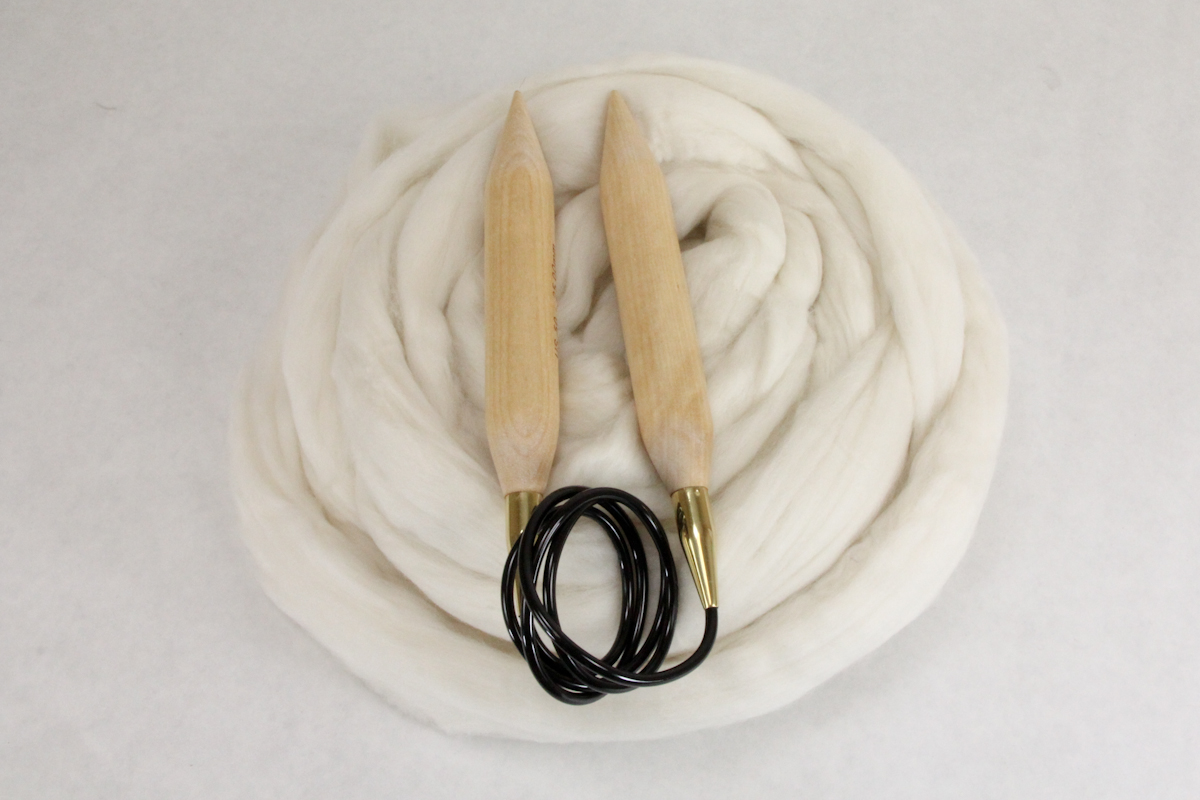
We used Super Fine Merino Roving and US50 needles for our little experiment. Keep in mind that though these US50 needles are HUGE, they are still a lot smaller than the diameter of an arm, so our samples are going to have even more structure and hold up better over time than an arm knit version would.
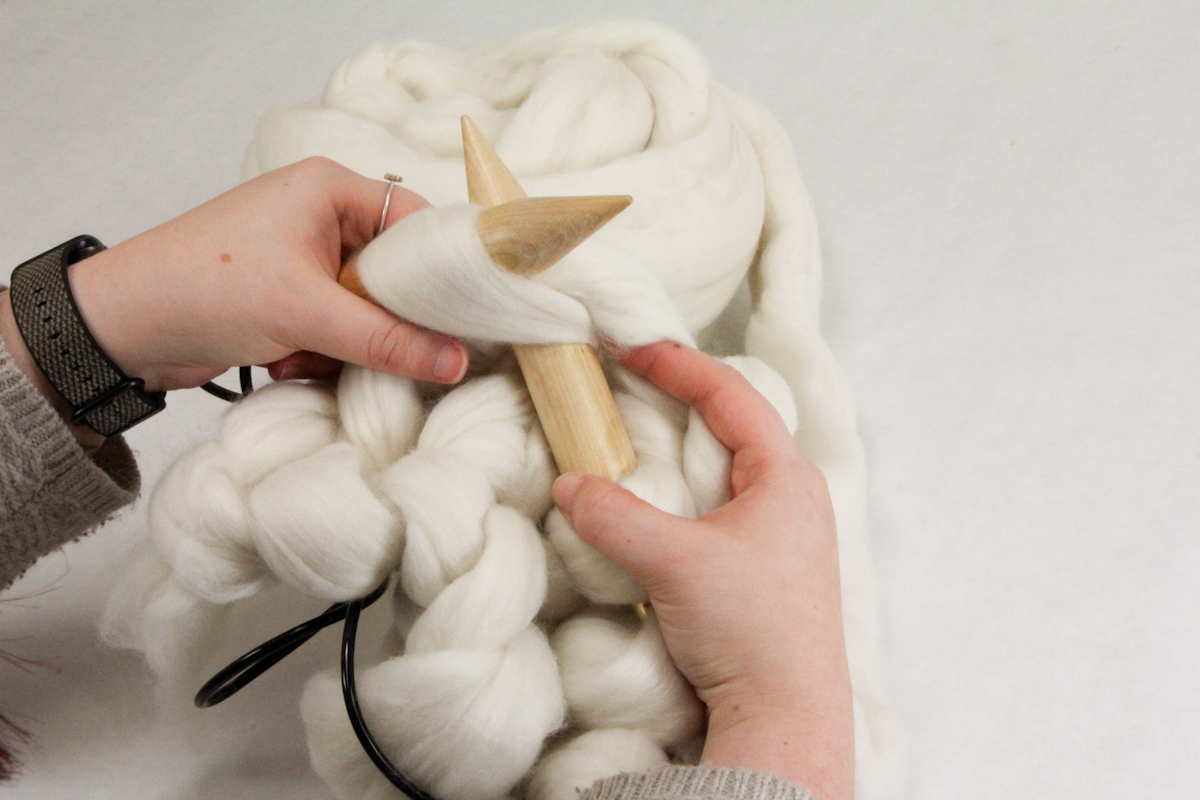
Emily's favorite weight of yarn to work with is Fingering so she wasn't super thrilled while working with this. The swatches did knit up super quickly, so it's easy to see the appeal of making such a fast blanket project.
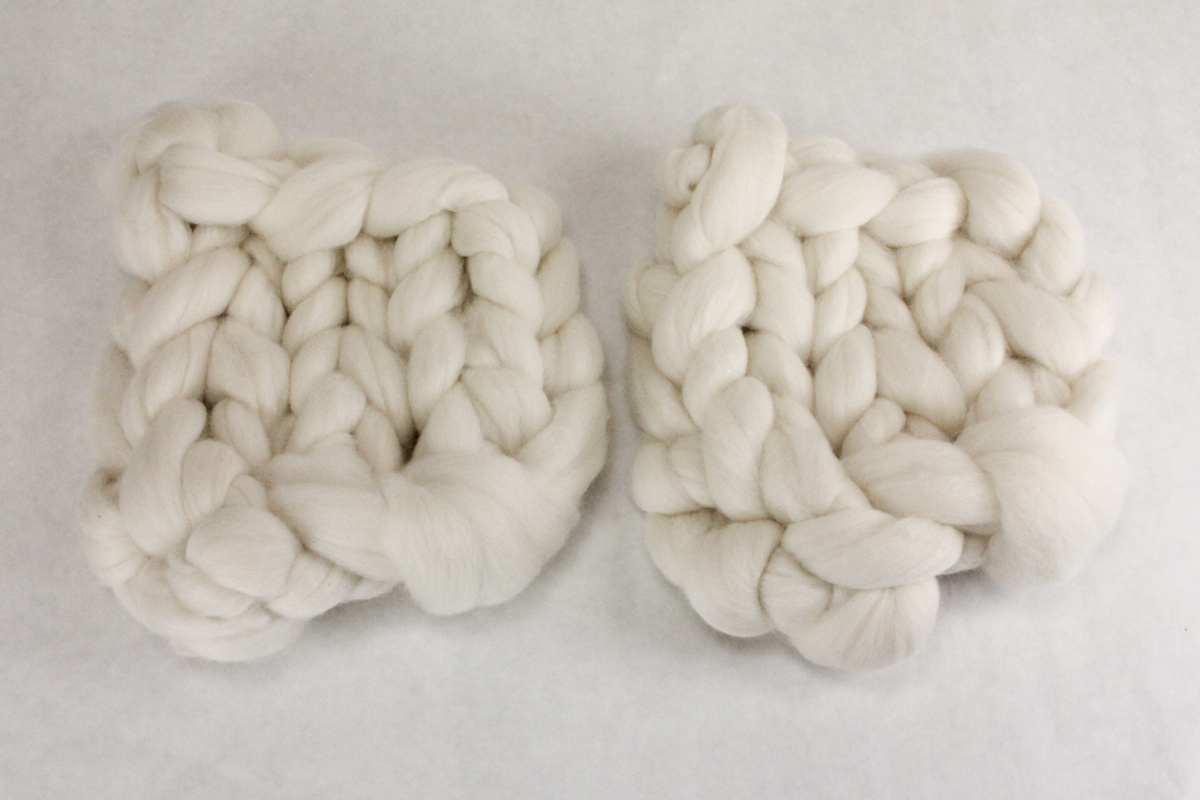
We made two swatches out of a 250g bag of fiber, so each swatch is around 125g of Merino wool. They look pretty, we definitely understand why people want to make these blankets! We needle felted the ends in because that is what most of the blog posts giving patterns for these blankets suggest to do.
One of these swatches is going to be our blanket sample, it lived in Emily's house on her couch for a month so we could see what happens to it as if it was being used like a real blanket. Things to keep in mind, Emily has 3 cats and a dog. The other one is destined for a trip through the wash because laundry accidents can happen in any house, even a fiber artist's house (husbands and teenagers can strike at any time!)
So without further ado, let's see the carnage.
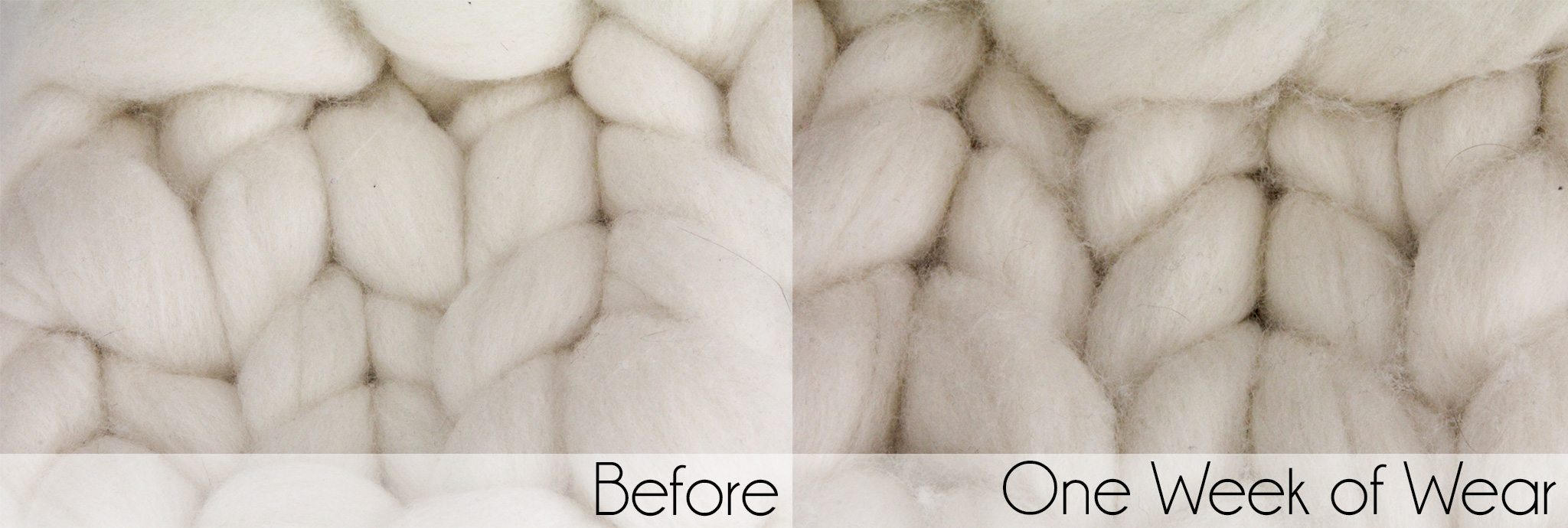
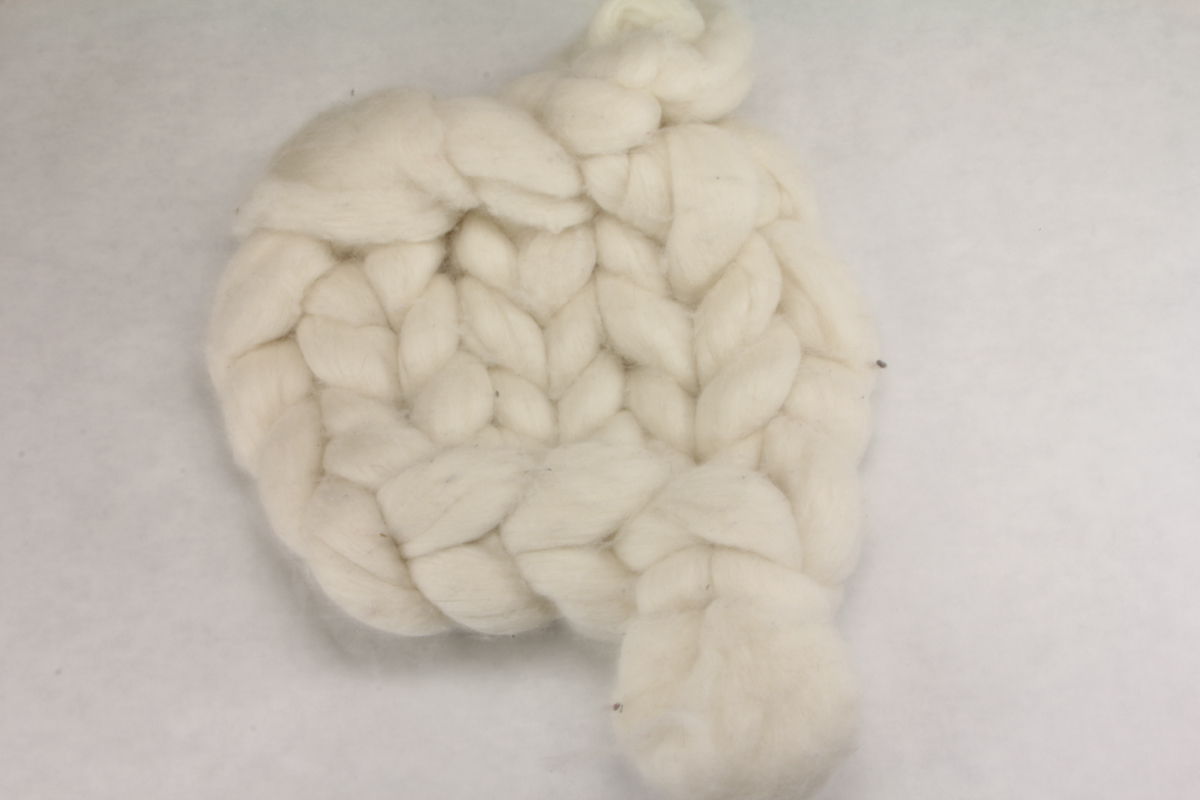
This is what the swatch looked like after sitting on the arm of the couch for just one week. All of the animals were very well behaved, there was no chewing or clawing involved. The swatch sat very peacefully on the arm of the couch and wasn't sat on or really disturbed at all. As you can see, there is already quite a bit of fuzz showing on the stitches and some darker bits of couch fuzz/animal hair that have made their way into the swatch. With very light wear this hypothetical blanket would already be getting pretty gross.
Now is also a great time to mention that the 250g bag of the Super Fine Merino we used to make the swatches costs $22.99. To make a blanket you would need 6lbs or more. We're talking about a $252.89 or more blanket here. Even if we used cheaper Fine Merino Top at $16.99 a 250g bag it would be a $186.89 or more blanket. That's a lot of money to spend on a blanket that is going to look this fuzzy after just one week.
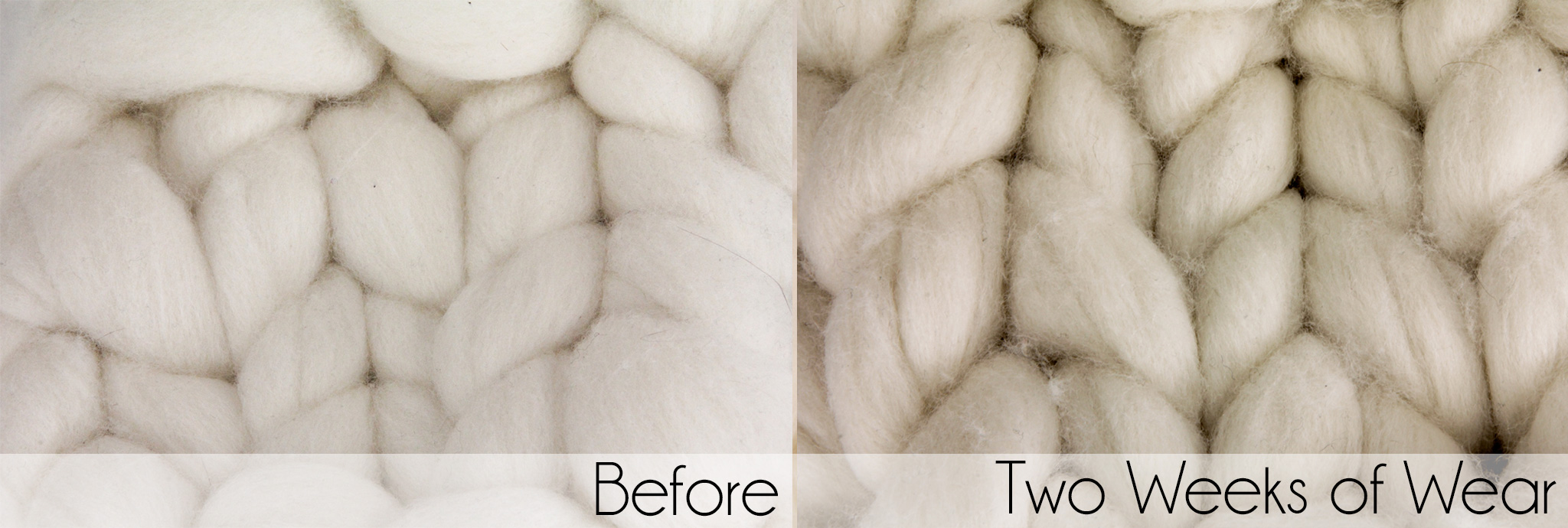
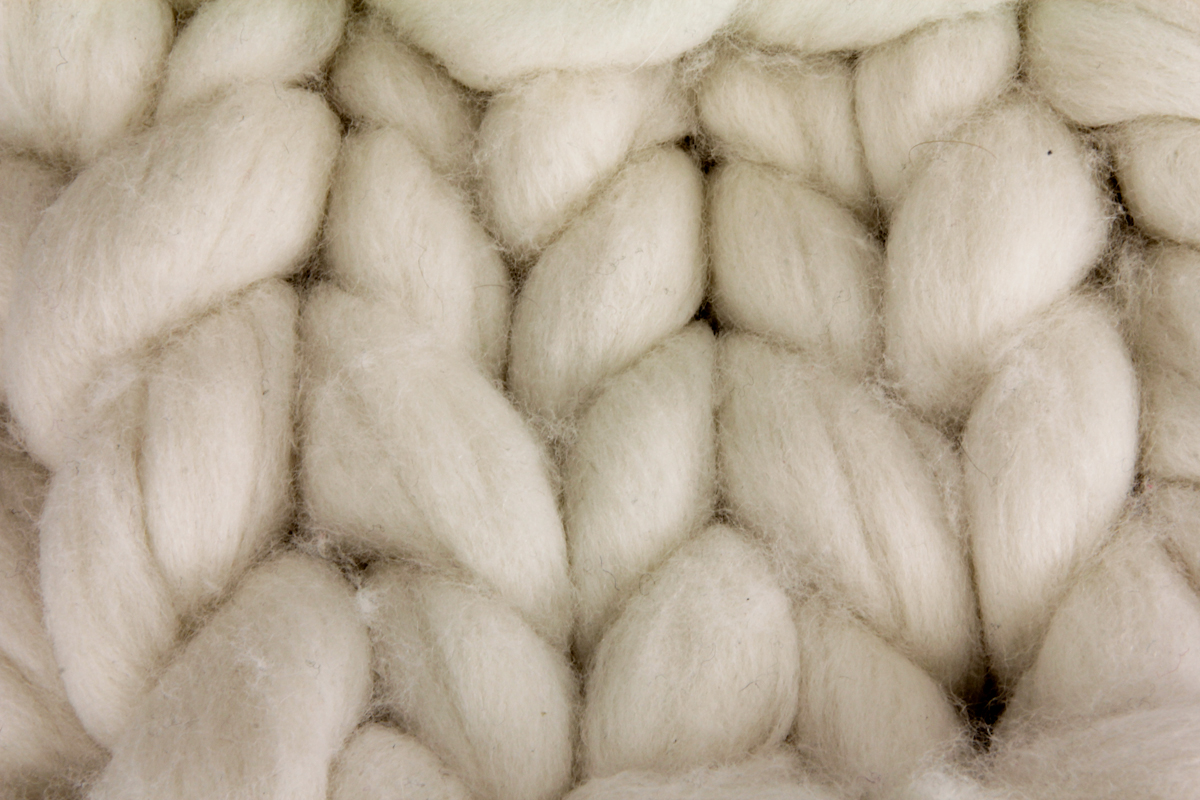
This is after two weeks of the same kind of light couch wear. Again no animals got to play with the swatch and it wasn't sat on or used like a blanket. It sat on the couch and got this much fuzzier basically just from people and animals looking at it.
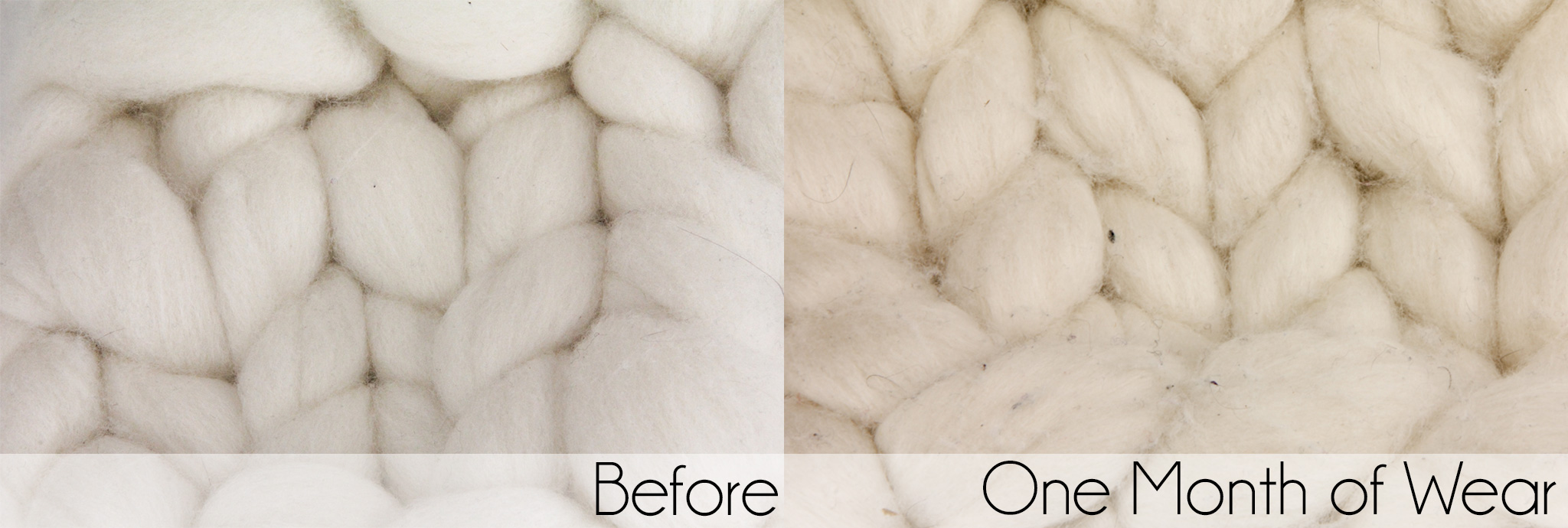
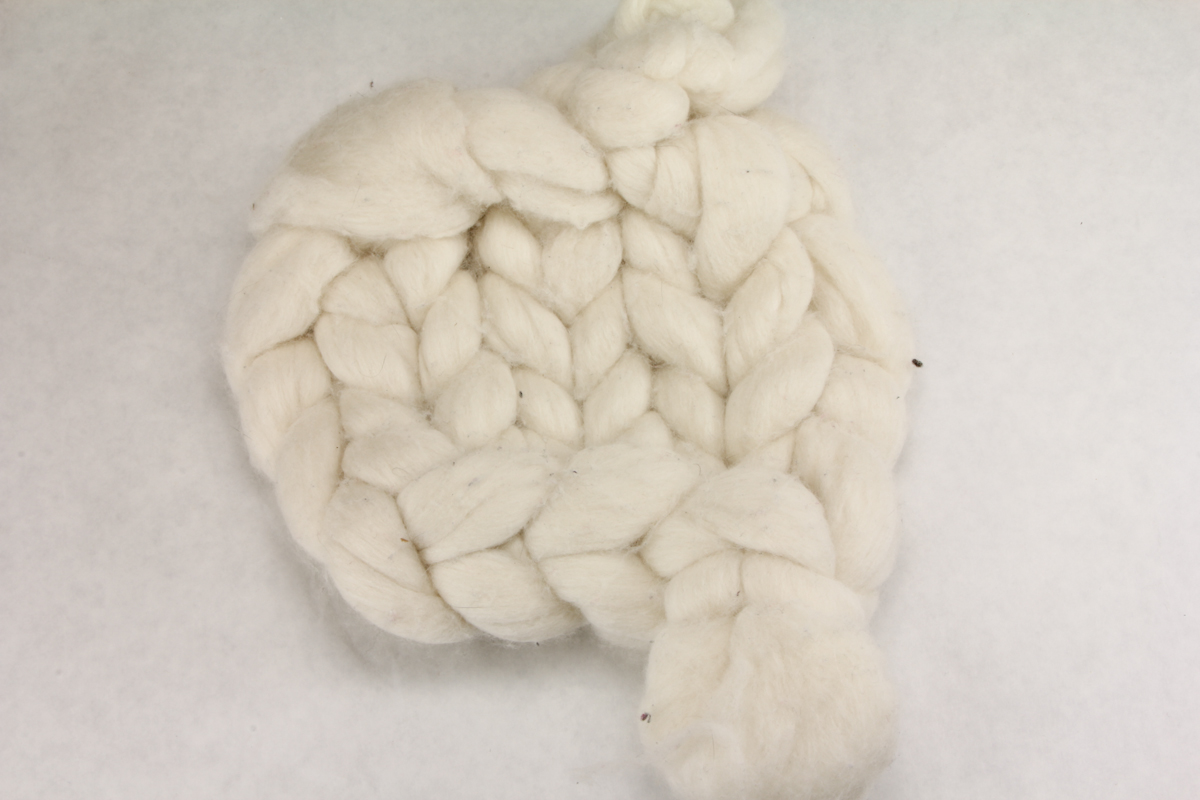
This is after one total month of wear. In the last two weeks we made the effort to sit on the swatch/keep it on our laps while watching TV so that it would simulate the real wear a blanket would get. This resulted in the top layer of wool becoming somewhat felted in addition to more darker fuzz/hair joining the swatch. As you can see from the progression, if this was a blanket it would just be a big wad of fuzz and hair in less than a year.
Let's check in with our laundered sample.
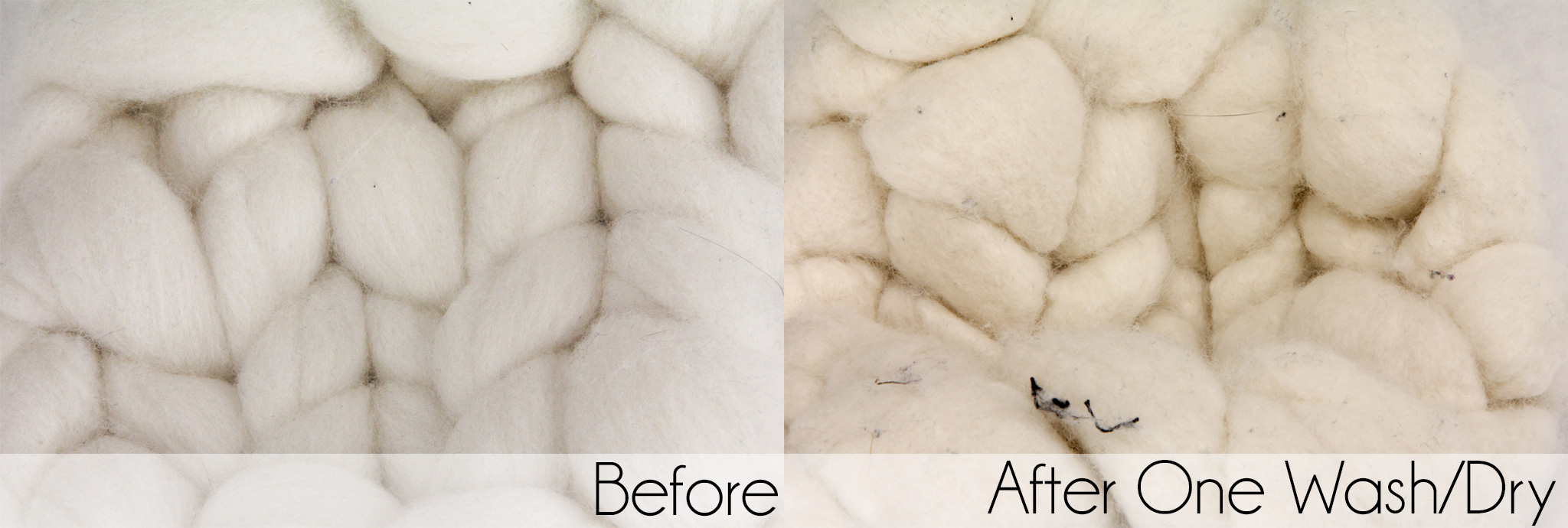
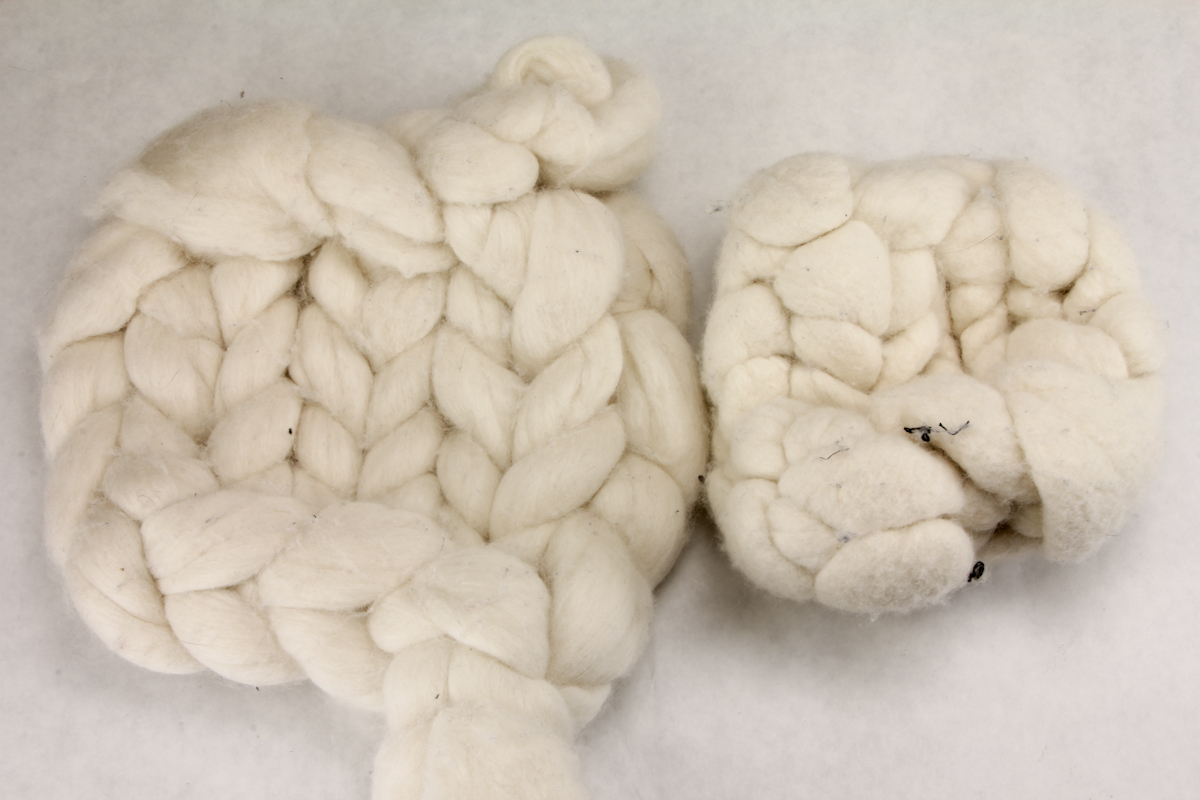
This went through the washing machine on hot and a full dry cycle. As you probably would have guessed, there is a lot of shrinkage (it's shown here next to the couch sample). This swatch is basically a glorified wool dryer ball now. We realize that you wouldn't want to actually wash one of these roving blankets like this on purpose, but we do think it's worth talking about how something will hold up to cleaning when it's a household item that you're intending on actually using in your home. And like we said earlier, laundry accidents can happen in any home.
Now let's check back in with the couch sample one more time.

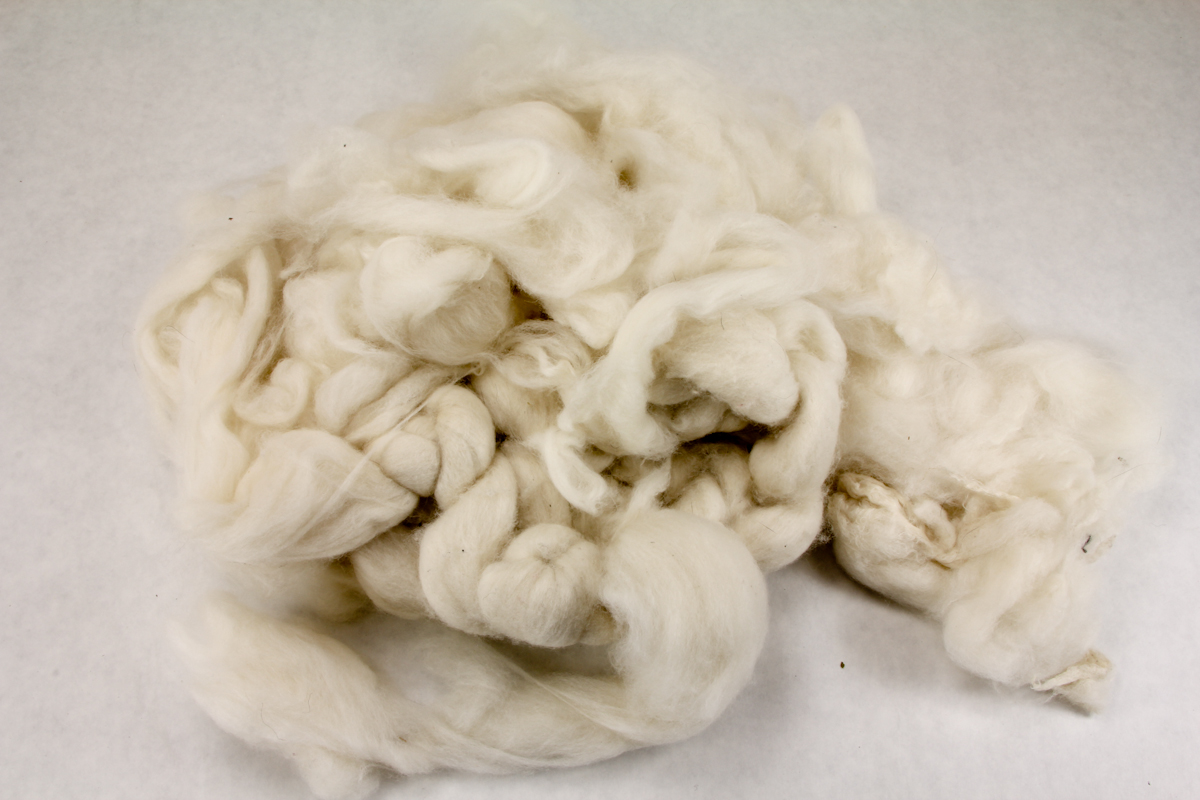
Previously the pets were not allowed to interact with the swatch, but for this last bit of science, we let the 8 month old puppy have a bit of fun. Above is the damage a dog can do to one of these blankets in just 4 minutes. Of course, a dog could damage even a blanket made with twisted fibers that have structure, but this unspun roving made for extra quick destruction.
We're not here to tell you what to do, if you'e not deterred and still want a chunky roving blanket, you do you! We just want our customers to have as much information as possible before they start a project.
If you're wanting a chunky blanket and we've convinced you not to use roving, some ideas are; spin your own bulky wool yarn, hold multiple yarns together, or maybe try an extreme knitting yarn like Ohhio Braid.
If you want to learn more about our little science experiment check out this YouTube video on why you shouldn't knit that chunky roving blanket. Nancy explains the benefits of twist and you can see just how dense that laundered swatch really is.

